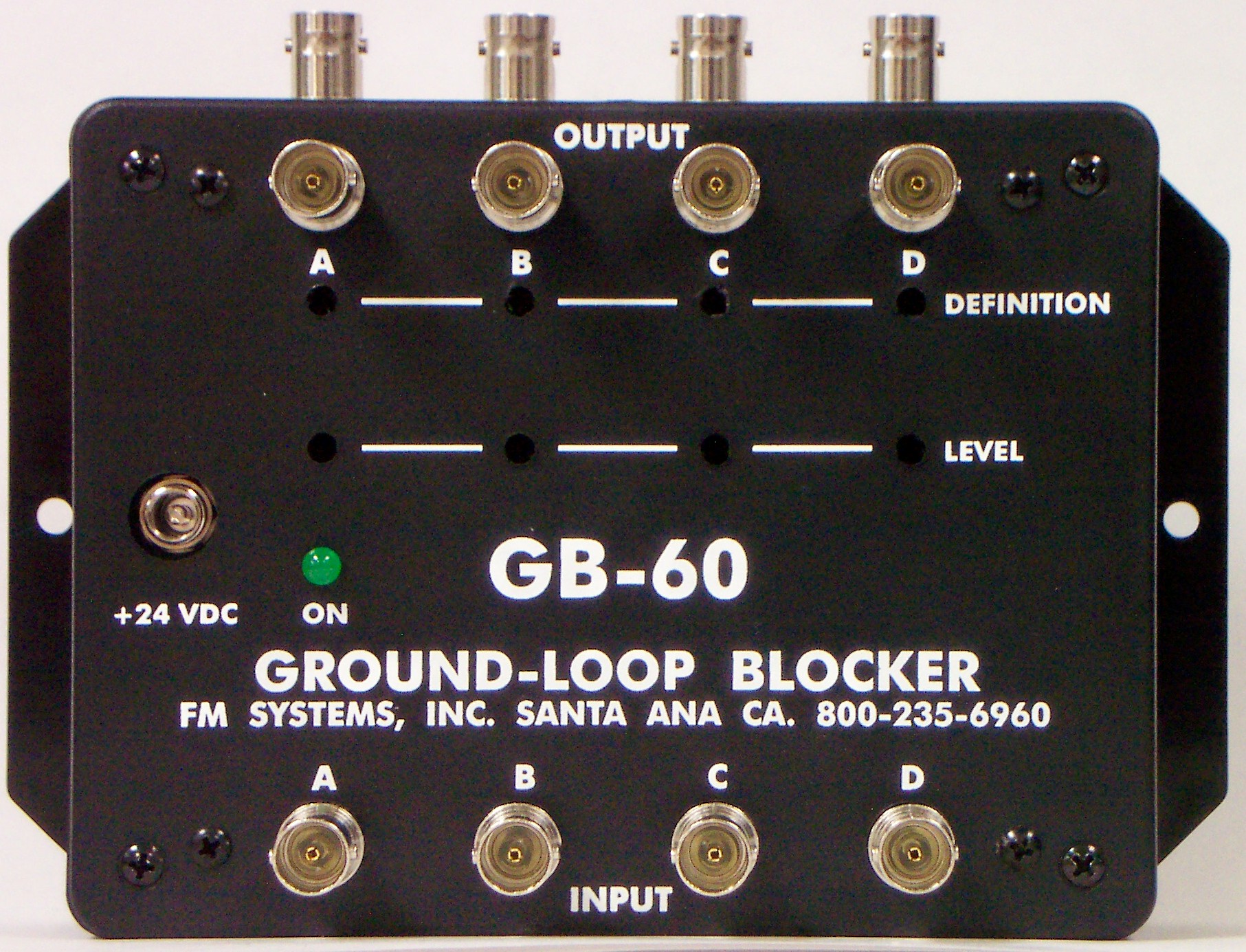WHAT CAUSES CCTV GROUND LOOP PROBLEMS AND HOW TO FIX THEM
WHAT CAUSES CCTV GROUND LOOP PROBLEMS AND HOW TO FIX THEM
Author : Frank McClatchie, President of FM SYSTEMS, INC. TEL: 1-800-235-6960
The annoying horizontal bars that occasionally show up in CCTV video monitors are the result of load unbalance in 60 cycle power distribution in the vicinity of a particular CCTV system. As such they may exist in one CCTV installation, but not in another essentially similar one. In fact, the “60 cycle picture bars” may come and go as heavy power loads turn on and off over time.
The cross-over between the flow of AC power and the CCTV picture comes about because both the power company and the CCTV installations have one or more common points of connection, called the SYSTEM GROUNDS.
The power company delivers 115VAC to the buildings power outlets by way of “center-tapped” 230VAC mains. The center-tap of the 230VAC main is locally grounded and that grounding lead must carry whatever difference in load current exists between the two 115VAC lines comprising one of the three phases supplying a particular building. Thus any “ground” located in one part of a building can be expected to have a substantially different 60 cycle AC voltage than another “ground” located elsewhere. That voltage difference may be quite small from the point of view of the power company, perhaps only a volt or two certainly no problem from a safety point of view. However a volt or two of 60 cycles will completely wipe out a CCTV picture. So, load power unbalances that are no problem at all to the power company may present severe interference to CCTV systems.
The real problem to the CCTV industry is that these AC ground currents will change with poor load balances and so may be tolerable one day (or one hour), and intolerable the next.
There are several solutions to this problem, for very simple CCTV installations, just making certain that there is only one ground anywhere in the system will work to insure that “60 cycle bars” will not occur. This “one ground” would normally be at the monitoring location. However more complex systems may require lightning arresters at various locations, or perhaps the camera case must be grounded for safely reasons, there may be more than one monitor location, or the camera cables are connected through coaxial “patch panels” which are grounded. All of these systems will necessarily have more than one grounded point in the system. As such they will be subjected to these 60 cycle ground currents with consequent moderate to severe 60 cycle interference.
There are two possible solutions to this type of interference. One is to connect an “Isolation Transformer” at each point in the system where “additional grounds” are attached (all grounded cameras, lightning arresters, patch panels, required coaxial cable grounds, and any other possible source of grounding).
The second possible solution is to isolate all “field grounds” from the ground at the monitor location by installing a GB-60 Ground-Loop Blocker. This unit is connected at the monitor location and serves to block and completely eliminate all 60 cycle interference from that monitor. Isolation Transformers need not be installed at any point in the system if the GB-60 Ground-Loop Blocker is placed at the monitor location. The GB-60 will block 60 cycle bars at the monitor even when the interference source is between two other field grounds. The GB-60 blocks ground loops on four CCTV circuits at one time and also corrects cable losses so that even long cable runs will be as clear and bright as short cable runs.
The GB-60 may also be used to extend cable runs beyond 2500 feet up to a mile or more by placing additional units at intervals along the cable. In addition to correcting for cable loss on long cable runs, the loss of detail in the picture may also be corrected which is particularly important when transmitting color pictures.
With a clear understanding of the source of these “60 Cycle Bars”, and the exact mechanism that introduces this interference into CCTV systems, the CCTV Installer can assemble even a complex system with the confidence that no 60 cycle Ground Loops will interfere with the transmission of clear pictures.



